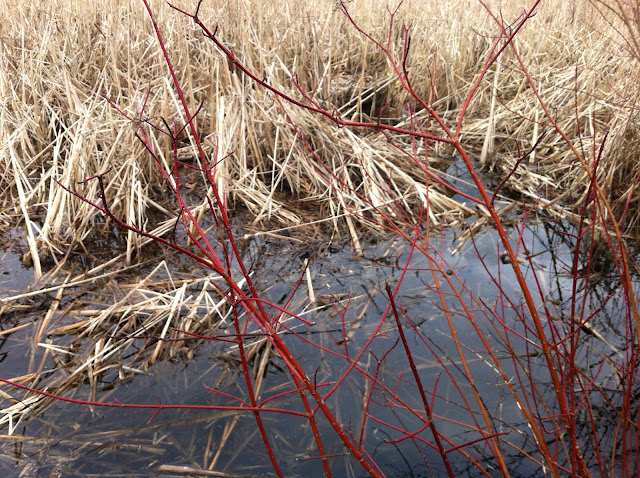I left town in a rented car, since my own was still under repair. The nicely air conditioned Honda drove me West toward Shutesbury, MA, on the foothills of the Berkshires, West of the Qaubbin reservoir, to an old resort turned retreat called Temenos. Centered around some mineral springs there was once a hotel, twice burned down and forgotten, before some Buddhist minded people bought the land and turned it into a wooded retreat with just a few cabins for rent.
I wondered among the cliffs and the woods, listening to the bird chorus, relaxing in the warm shade. The sun would have been hot, since this weekend reached temperatures in the 90's, but under the trees it was perfect.
I have never seen so many Ladyslipper orchids before - eventually I stopped taking a picture of every one, but not until I had found a least 20.
I know very little about geology and the rocks that form the base for our lands, but I could see it was different from what I see in Eastern MA around Boston. Obviously the ice age have left traces here, with boulders, cracks and ledges.
This photo is taken through the screened porch - my neighbors and resident Phoebes, tending their nest under my roof.
I also saw a long list of birds, some new to me. Pileated woodpecker, blue headed vireo, ovenbird, pine warbler. In the never ending chorus I could hear Eastern woodpeewee, scarlet tanagers, winter wrens, robins, goldfinches, downy woodpeckers, and red eyed vireo.At night I heard the spring peepers gathering by the pond.
Along a brook, little puddles with mineral rich water. I pumped my drinking water from the well, and the water was slightly reddish from the iron and manganese. I felt a sensation of fullness only after drinking that water.
Neither have I ever seen so many Mountain laurels. I see a lot of it in the gardens I tend to, but there is no comparison to a wood filled of wild ones, about to burst. Next year I will schedule my visit to the second week of June, so that I can walk in among the flowers.
Mountain Laurel is an understory shrub, growing under the tree canopy, fighting for a chance in the sun. It is an evergreen, taking advantage of the sun during the winter when trees lose their leaves. Other understory plants like Moosewood or striped Maple below, have enormous leaves.
Hobblebush (Viburnum Lantanoides) is doing the same thing, growing big leaves as sun catchers. I missed the flowers of this one, it must have been a treat as well.

I never saw any, but I was told that along this cliff ledge with dripping water, you could often see porcupines.
I think I must be part plant - I can so clearly feel the energy coming down from the sky and into the green, green, green...
Virginia creeper vine was covering some of the rocks. I found it interesting that I did not see any poison Ivy at all in these woods. In Boston, it would inhabit the same kind of woods.
A few Trilliums, flowers gone
Star made out of root
Young American toad. It was no bigger than my thumb nail.
Bear claw marks! We were told not to compost and be careful not to leave food scraps around.
The after-dinner hike lead up to the mountain top and the view of the lake below.
It was there and then that I first heard the song of the hermit thrush. It sang for a good 20 minutes and I followed it deeper and deeper into the woods, mesmerized by its sunset song, until I got a glimpse of it before it flew off and the mosquitos really started to eat me alive.
The next morning all I wanted to do was to find the hermit thrush again, and I did hear it briefly around nine, but then it went quiet.
The retreat had its own little pond, but the water was so bitterly cold that not even 94 degrees could convince me to go into the water completely.
Another lovely wildflower is the Indian Cucumber root.
Back up on the mountaintop again, a better view of the lake, and the great beaver lodge.
Oak leaf gall, like an apple made of rice paper
Below the mountain, a creek of cold fresh water leading to the lake. Gray tree frogs were heard but not seen.
Under the root system of the fallen trees, a bird built a nest, maybe the winter wren.
And on the forest floor, little lovely star flower shines.
I hope to post some of the sound recordings I made of the hermit thrush for my next post.




























































